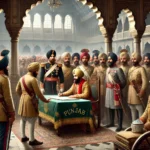PAK YATRA is a tour operator company providing tour services and facilitates Sikh community from different parts of the world.
Importance of Gurdwara Guru Kotha Sahib, Wazirabad:
Gurdwara Guru Kotha Sahib in Wazirabad, Gujranwala district, holds significant historical and religious importance for the Sikh community, commemorating the visit of Guru Hargobind Sahib Ji, the sixth Sikh Guru.
Story Behind:
Legend has it that Guru Hargobind Sahib Ji stayed at the abode of his loyal disciple, Bhai Khem Chand Ji, near Wazirabad, during his return voyage from Kashmir. In honor of the Guru’s presence and teachings, a Gurdwara Sahib was established at this site, known as Gurdwara Guru Kotha Sahib.
Preservation Efforts:
Despite facing challenges of deterioration and encroachment, efforts are being made to conserve and safeguard Gurdwara Guru Kotha Sahib. Various initiatives, including petitions to the Pakistani government for improved care and preservation, are underway to protect this historical relic.
Architectural Marvel:
Gurdwara Guru Kotha Sahib is known for its distinctive architecture, featuring a three-storey design on an elevated platform. Each level of the structure exhibits unique characteristics, including different window patterns and domed ceilings, reflecting the architectural diversity of the Sikh heritage.
Historical Evolution:
The historical evolution of Gurdwara Guru Kotha Sahib traces back to the visit of Guru Hargobind Sahib Ji and the subsequent establishment of the Gurdwara in honor of his presence. Over time, the Gurdwara has served as a center for religious and cultural events, maintaining its significance in Sikh history.
Background:
Gurdwara Guru Kotha Sahib’s background is rooted in the spiritual journey of Guru Hargobind Sahib Ji and his interactions with his disciples. The establishment of the Gurdwara reflects the enduring legacy of Sikhism in the region and its influence on the local community.
Historical Significance:
Despite its current state of disrepair and challenges, Gurdwara Guru Kotha Sahib remains highly esteemed by Sikhs worldwide for its historical and religious significance. It serves as a symbol of Sikh heritage and spirituality, fostering social peace and collaboration within the community.




